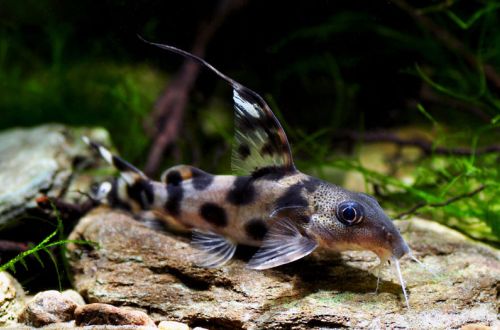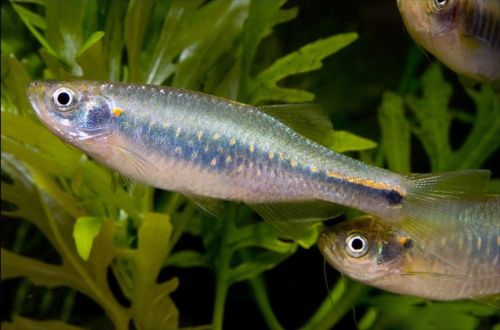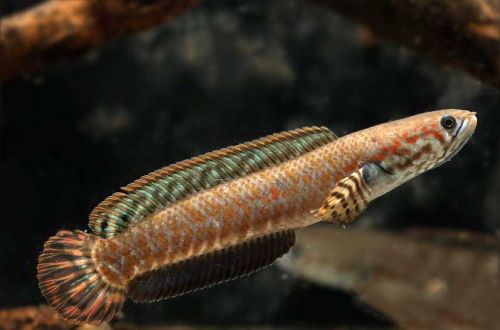
Synodontis the Clown
Flag Synodontis or Clown Synodontis, scientific name Synodontis decorus, belongs to the Mochokidae family. One of the most beautiful representatives of Synodontis, it can become an adornment of almost any large freshwater aquarium. And his peaceful disposition, unpretentiousness and the ability to adapt to various water conditions significantly expands the circle of possible neighbors.

Contents
Habitat
It comes from the vast basin of the Congo River from the territory of the modern states of the Democratic Republic of the Congo, Cameroon and the Republic of the Congo. Prefers regions with a slow current, backwaters, whirlpools, keeps mainly near shelters.
Brief information:
- The volume of the aquarium – from 200 liters.
- Temperature – 22-27°C
- Value pH — 6.0–8.0
- Water hardness – soft to hard (3-25 dGH)
- Substrate type – sandy, soft
- Lighting – subdued or moderate
- Brackish water – no
- Water movement – light or moderate
- The size of the fish is up to 30 cm.
- Nutrition – any drowning
- Temperament – conditionally peaceful
- Content single or in a group
Description
Adults reach a length of about 30 cm. The color is pinkish-gray with interspersed black dots and a grainy pattern on the head. A characteristic feature is the spectacular dorsal and caudal fins. The high dorsal fin has a chiseled pattern similar to the body and a very long first ray, crowding like a thread. The tail is striped with alternating white and black stripes. Sexual dimorphism is weakly expressed, males are only slightly smaller than females and have a more saturated color.
Food
Synodontis-Clown is omnivorous and undemanding to the composition of the diet. It accepts all popular types of food – dry, frozen, live and vegetable, including vegetables, such as peeled peas, cucumber, etc. Important – the food must be sinking, although in some cases the catfish can swim up to the surface.
Maintenance and care, arrangement of the aquarium
One adult catfish will require a tank of at least 200 liters. The design uses a soft substrate, shelters in the form of snags and intertwined roots, several strong plants with a powerful root system or artificial vegetation. Small plants are likely to be pulled out of the ground by such a large fish, so planting them is impractical. But clusters of floating plants will come in handy and serve as an additional means of shading the aquarium. In general, the design is quite simple, the main thing is shelter and not too bright lighting. The content won’t be too much of a hassle either. The soil should be regularly cleaned of organic waste and part of the water (15–20% of the volume) should be renewed weekly with fresh water.
Behavior and Compatibility
Peaceful calm fish, gets along well with other species that are large enough to fit in her mouth. But small fish can be accidentally swallowed – everything is to blame for the promiscuity in the diet of Synodontis the clown. In intraspecific relationships, no problems were noted, catfish are able to live perfectly both singly and in a group, provided that the aquarium is suitable in size.
Breeding / breeding
It is almost impossible to get fry of Synodontis in an amateur aquarium. Successful captive breeding has currently only been achieved in commercial fish farms with hormone injections.
Fish diseases
The main cause of most diseases is unsuitable living conditions and poor-quality food. If the first symptoms are detected, you should check the water parameters and the presence of high concentrations of hazardous substances (ammonia, nitrites, nitrates, etc.), if necessary, bring the indicators back to normal and only then proceed with treatment. Read more about symptoms and treatments in the Aquarium Fish Diseases section.





